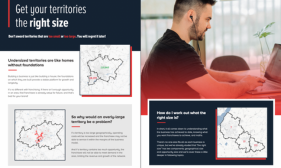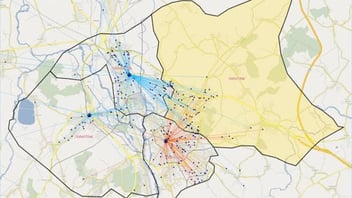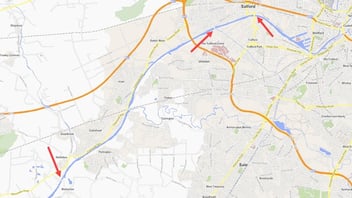May 19, 2012
The scenario
At the start of every franchise brand, demographics pertinent to the target market should always be given consideration.
If you’re running a territory-based franchise model, then naturally you will want to ensure each territory contains enough of your target market to run a successful business. Likewise, if you’re running a site-based model and territories are unimportant, you still need to ensure that the customers who will buy your product or service are plentiful to a franchisee’s location.
In the majority of cases, for a B2C model this often involves gathering simple census data and matching it with geography to define the commercial opportunity. E.g. 100,000 households.
The problem with census data
Unfortunately, rarely does census data actually define your target market. Will every household want your product or service? Is every household occupied by the property’s decision maker? Does every household have the required income level to afford your product or service? The answer to these questions will always be no and because census data types cannot be accurately cross-tabulated with each other, it becomes impossible to say “how many 40-65 years olds owning their own house and with a combined income of £X are there?”.
Instantly, we have dismissed the idea that there are 100,000 households in the operational area that you will sell to and the real question remains - what is the commercial opportunity?
Enter socio-economics
There are multiple socio-economic datasets available including Sonar, Mosaic, ACORN and Cameo and in simple terms, socio-economics combine life-stage (age) with affluence (wealth). In each set, there can be as many as 60 (or more) classifications - groups that share similar characteristics.
Whilst socio-economics will still not define exactly how many households will buy your product or service, they do allow you to model your past customer data against a nation. Enter the profile.
The customer socio-economic profile displays your penetration against national levels. The higher your penetration against the national figure for each classification, the more prominent that classification is within your customer base - and therefore it forms part of the definition of your target market.
In the above example of 100,000 households, this may now mean that we have only 12,000 households in the operational area, but the key difference is that those 12,000 households are very likely to at some point:
(a) Require your product or service AND
(b) Buy your product or service
Summary
Socio-economics allow you to better define your target market, and better target those that are far more likely to purchase your products or services.
By implementing socio-economics, franchisors and franchisees can better understand the commercial opportunity available them and make informed strategic decisions that will benefit the individual businesses and the brand as a whole.
You can read part 2 of this series by clicking here.





